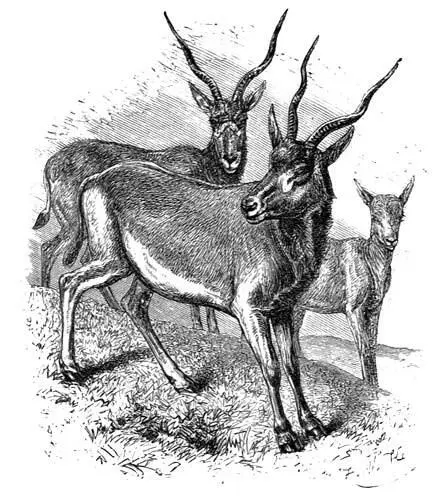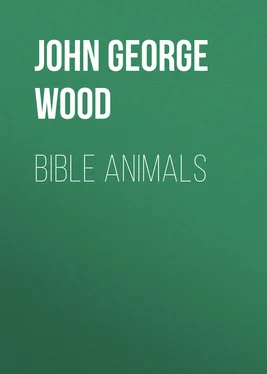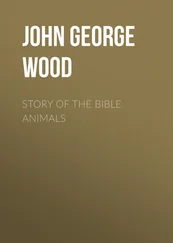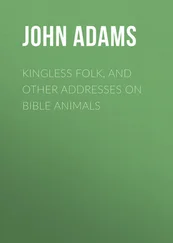John George Wood - Bible Animals
Здесь есть возможность читать онлайн «John George Wood - Bible Animals» — ознакомительный отрывок электронной книги совершенно бесплатно, а после прочтения отрывка купить полную версию. В некоторых случаях можно слушать аудио, скачать через торрент в формате fb2 и присутствует краткое содержание. Жанр: foreign_prose, foreign_religion, Философия, foreign_psychology, foreign_antique, на английском языке. Описание произведения, (предисловие) а так же отзывы посетителей доступны на портале библиотеки ЛибКат.
- Название:Bible Animals
- Автор:
- Жанр:
- Год:неизвестен
- ISBN:нет данных
- Рейтинг книги:3 / 5. Голосов: 1
-
Избранное:Добавить в избранное
- Отзывы:
-
Ваша оценка:
- 60
- 1
- 2
- 3
- 4
- 5
Bible Animals: краткое содержание, описание и аннотация
Предлагаем к чтению аннотацию, описание, краткое содержание или предисловие (зависит от того, что написал сам автор книги «Bible Animals»). Если вы не нашли необходимую информацию о книге — напишите в комментариях, мы постараемся отыскать её.
Bible Animals — читать онлайн ознакомительный отрывок
Ниже представлен текст книги, разбитый по страницам. Система сохранения места последней прочитанной страницы, позволяет с удобством читать онлайн бесплатно книгу «Bible Animals», без необходимости каждый раз заново искать на чём Вы остановились. Поставьте закладку, и сможете в любой момент перейти на страницу, на которой закончили чтение.
Интервал:
Закладка:
THE PYGARG, OR ADDAX
The Dishon or Dyshon—Signification of the word Pygarg—Certainty that the Dishon is an antelope, and that it must be one of a few species—Former and present range of the Addax—Description of the Addax—The Strepsiceros of Pliny.
There is a species of animal mentioned once in the Scriptures under the name of Dishon which the Jewish Bible leaves untranslated, and merely gives as Dyshon, and which is rendered in the Septuagint by Pugargos, or Pygarg, as one version gives it. Now, the meaning of the word Pygarg is white-crouped, and for that reason the Pygarg of the Scriptures is usually held to be one of the white-crouped antelopes, of which several species are known. Perhaps it may be one of them—it may possibly be neither, and it may probably refer to all of them.
But that an antelope of some kind is meant by the word Dishon is evident enough, and it is also evident that the Dishon must have been one of the antelopes which could be obtained by the Jews. Now as the species of antelope which could have furnished food for that nation are very few in number, it is clear that, even if we do not hit upon the exact species, we may be sure of selecting an animal that was closely allied to it. Moreover, as the nomenclature is exceedingly loose, it is probable that more than one species might have been included in the word Dishon.
Modern commentators have agreed that there is every probability that the Dishon of the Pentateuch was the antelope known by the name of Addax.
This handsome antelope is a native of Northern Africa. It has a very wide range, and, even at the present day, is found in the vicinity of Palestine, so that it evidently was one of the antelopes which could be killed by Jewish hunters. From its large size, and long twisted horns, it bears a strong resemblance to the Koodoo of Southern Africa. The horns, however, are not so long, nor so boldly twisted, the curve being comparatively slight, and not possessing the bold spiral shape which distinguishes those of the koodoo.

THE ADDAX, OR PYGARG OF SCRIPTURE.
" These are the beasts which ye shall eat: the ox, the sheep, … the pygarg, and the wild ox, and the chamois. "—Deut. xiv. 4, 5.
The ordinary height of the Addax is three feet seven or eight inches, and the horns are almost exactly alike in the two sexes. Their length, from the head to the tips, is rather more than two feet. Its colour is mostly white, but a thick mane of dark black hair falls from the throat, a patch of similar hair grows on the forehead, and the back and shoulders are greyish brown. There is no mane on the back of the neck, as is the case with the koodoo.
The Addax is a sand-loving animal, as is shown by the wide and spreading hoofs, which afford it a firm footing on the yielding soil. In all probability, this is one of the animals which would be taken, like the wild bull, in a net, being surrounded and driven into the toils by a number of hunters. It is not, however, one of the gregarious species, and is not found in those vast herds in which some of the antelopes love to assemble.
Some writers reject the Addax as the Dishon, and are inclined to consider that the real representative of the word is to be found in the Ariel or Isabella gazelles. Of these, however, we have already treated, and enough has been said about them to show that these gazelles are in all probability comprised under the name Tsebi.
It has been suggested, in contradiction to the opinion that the Dishon is the Addax, that the word Strepsiceros, or Twisted Horn, is given to it by Pliny, who also mentions that one of the native names for the animal is Adas, or Akas, and that he distinguishes it from the Pygarg. Still, the weight of evidence is so great in favour of the identity of the Dishon and the Pygarg, that we may accept the interpretation with safety.
THE FALLOW-DEER, OR BUBALE
The word Jachmur evidently represents a species of antelope—Probability that the Jachmur is identical with the Bubale, or Bekk'r-el-Wash—Resemblance of the animal to the ox tribe—Its ox-like horns and mode of attack—Its capability of domestication—Former and present range of the Bubale—Its representation on the monuments of ancient Egypt—Delicacy of its flesh—Size and general appearance of the animal.
It has already been mentioned that in the Old Testament there occur the names of three or four animals, which clearly belong to one or other of three or four antelopes. Only one of these names now remains to be identified. This is the Jachmur, or Yachmur, a word which has been rendered in the Septuagint as Boubalos, and has been translated in our Authorized Version as Fallow Deer.
We shall presently see that the Fallow Deer is to be identified with another animal, and that the word Jachmur must find another interpretation. If we follow the Septuagint, and call it the Bubale, we shall identify it with a well-known antelope, called by the Arabs the "Bekk'r-el-Wash," and known to zoologists as the Bubale ( Acronotus bubalis ).
This fine antelope would scarcely be recognised as such by an unskilled observer, as in its general appearance it much more resembles the ox tribe than the antelope. Indeed, the Arabic title, "Bekk'r-el-Wash," or Wild Cow, shows how close must be the resemblance to the oxen. The Arabs, and indeed all the Orientals in whose countries it lives, believe it not to be an antelope, but one of the oxen, and class it accordingly.
How much the appearance of the Bubale justifies them in this opinion may be judged by reference to the figure on page 145 Even at the present day the Bubale has a very wide range, and formerly had in all probability a much wider. It is indigenous to Barbary, and has continued to spread itself over the greater part of Northern Africa, including the borders of the Sahara, the edges of the cultivated districts, and up the Nile for no small distance. In former days it was evidently a tolerably common animal of chase in Upper Egypt, as there are representations of it on the monuments, drawn with the quaint truthfulness which distinguishes the monumental sculpture of that period. THE BUBALE, OR FALLOW DEER OF SCRIPTURE. " And Solomon's provision for one day was thirty measures of fine flour, and threescore measure of meal; ten fat oxen, and twenty oxen out of the pastures, and an hundred sheep; beside harts and roebucks, and fallow-deer, and fatted fowl. "—1 Kings iv. 22, 23. It is probable that in and about Palestine it was equally common, so that there is good reason why it should be specially named as one of the animals that were lawful food. Not only was its flesh permitted to be eaten, but it was evidently considered as a great dainty, inasmuch as the Jachmur is mentioned in 1 Kings iv. 23 as one of the animals which were brought to the royal table. See the passage quoted in full below the illustration. Even at the present day it is seen near the Red Sea; and as within the memory of man it had a much larger range than can now be assigned to it, we may safely conjecture that it resided in Palestine in sufficient numbers to afford a constant supply of food to the royal residence. In size the Bubale is about equal to that of a heifer, and its general colour is reddish brown. The head is long and narrow, so that the heavy and deeply-ridged horns seem to stand out with peculiar boldness. The shoulders are rather high, the neck is very ox-like, and from the end of the tail hangs a tuft of long black hair. It is a gregarious animal, and is found in herds, though not of very great numbers. The Bubale is closely allied to the hartebeest, the well-known antelope of Southern Africa.
. The horns are thick, short, and heavy, and are first inclined forwards, and then rather suddenly bent backwards. This formation of the horns causes the Bubale to use his weapons after the manner of the bull, thereby increasing the resemblance between them. When it attacks, the Bubale lowers its head to the ground, and as soon as its antagonist is within reach, tosses its head violently upwards, or swings it with a sidelong upward blow. In either case, the sharp curved horns, impelled by the powerful neck of the animal, and assisted by the weight of the large head, become most formidable weapons.
Интервал:
Закладка:
Похожие книги на «Bible Animals»
Представляем Вашему вниманию похожие книги на «Bible Animals» списком для выбора. Мы отобрали схожую по названию и смыслу литературу в надежде предоставить читателям больше вариантов отыскать новые, интересные, ещё непрочитанные произведения.
Обсуждение, отзывы о книге «Bible Animals» и просто собственные мнения читателей. Оставьте ваши комментарии, напишите, что Вы думаете о произведении, его смысле или главных героях. Укажите что конкретно понравилось, а что нет, и почему Вы так считаете.












